- Home
- TV History
- Network Studios History
- Cameras
- Archives
- Viewseum
- About / Comments
Skip to content








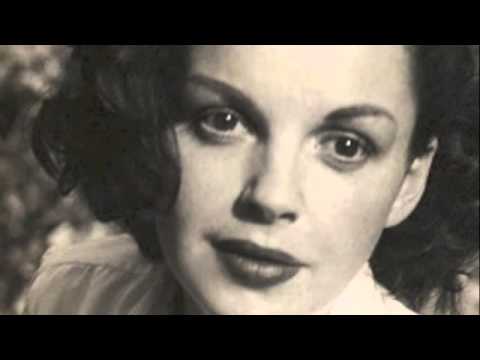



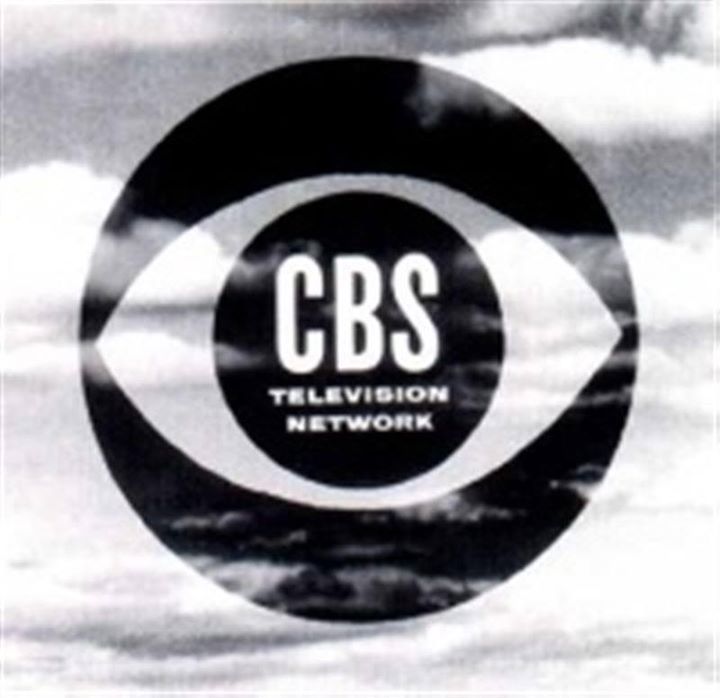







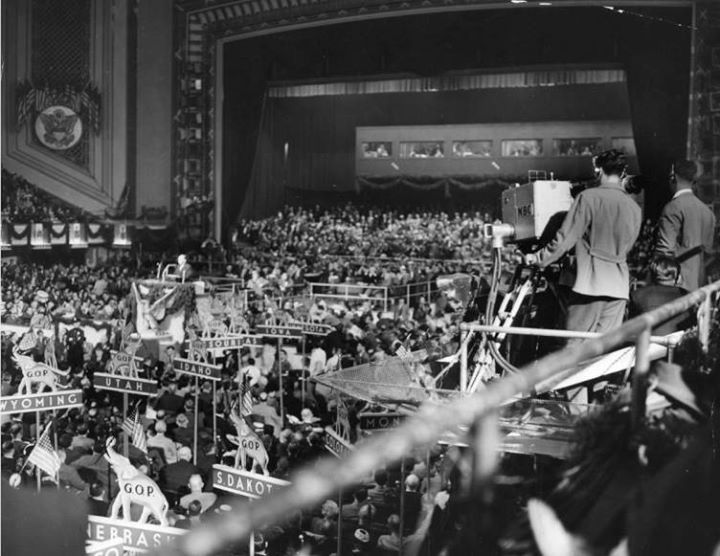

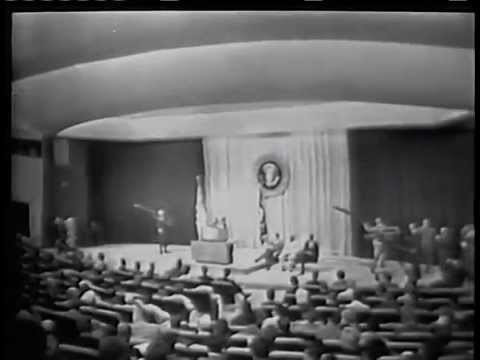



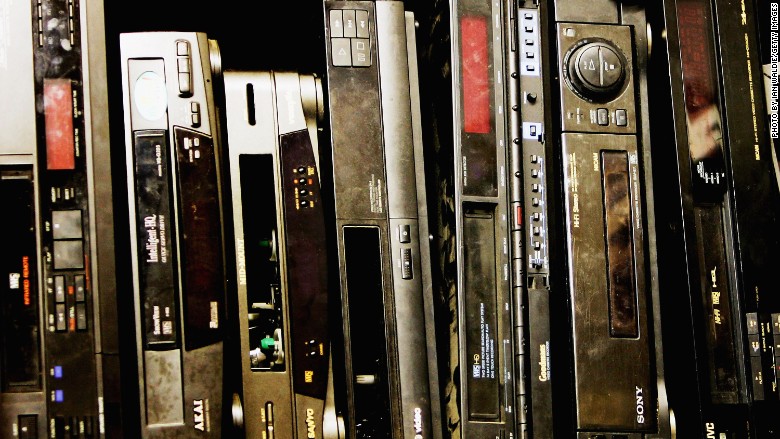





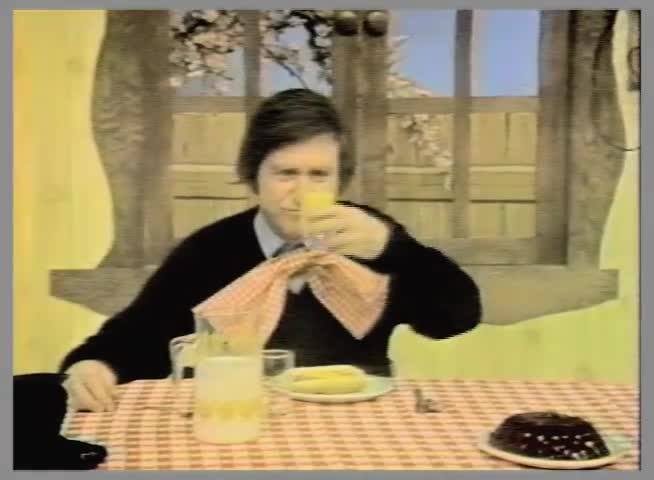

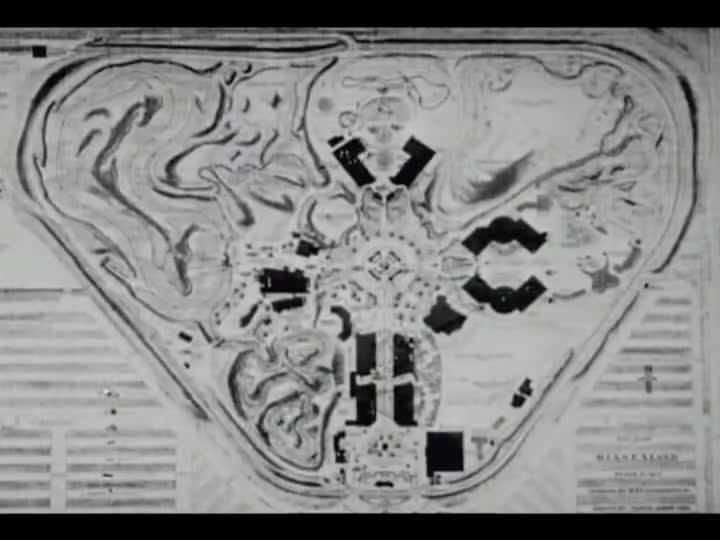

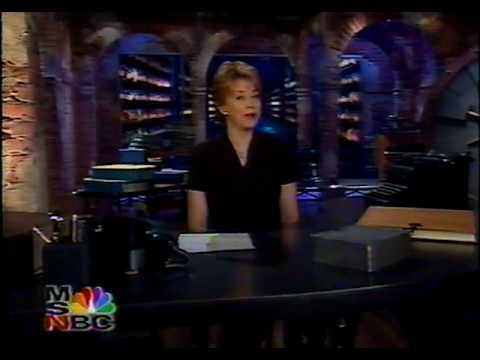

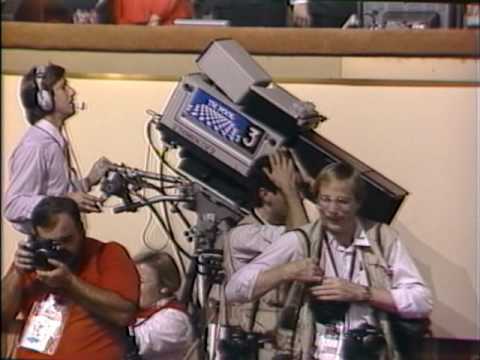

Posts in Category: TV History
Page 20 of 136
« Previous
1
2
3
4
5
6
7
8
9
10
11
12
13
14
15
16
17
18
19
20
21
22
23
24
25
26
27
28
29
30
31
32
33
34
35
36
37
38
39
40
41
42
43
44
45
46
47
48
49
50
51
52
53
54
55
56
57
58
59
60
61
62
63
64
65
66
67
68
69
70
71
72
73
74
75
76
77
78
79
80
81
82
83
84
85
86
87
88
89
90
91
92
93
94
95
96
97
98
99
100
101
102
103
104
105
106
107
108
109
110
111
112
113
114
115
116
117
118
119
120
121
122
123
124
125
126
127
128
129
130
131
132
133
134
135
136
Next » July 30, 1943…RCA Announces Sale Of NBC Blue Network To Ed Noble
On July 30, 2016
- TV History
July 30, 1943…RCA Announces Sale Of NBC Blue Network To Ed Noble
It would be October 12th before the FCC approved the deal, but July 30 was the day they agreed on the $8 million price, but would you believe that Noble actually only paid $7 million? It’s true, and here is the story.
RCA head David Sarnoff had been very firm on the asking price, even as bidders including such luminaries as Chicago’s Marshall Field, the Mellon family, McGraw Hill and Paramount PIctures balked at the price. Edward Noble owned the Lifesaver candy company, and was also interested, but was also balking.
Finally, a man that had started with NBC’s WEAF as an accountant in 1922, came up with a plan. His name was Mark Woods, and as VP of the Blue Net, he had overseen the fiscal separation of Red and Blue assets that became official on January 9, 1942, a year after the court ordered breakup.
Woods saw a chance to do something for the man who was apparently destined to be his boss, so he did it. Noble wanted to pay $7 million, instead of the $8 million RCA wanted. To make it happen, Woods went to Sarnoff and discussed an RCA sponsored series to run on the Blue net in the first year after the sale. Wood’s idea included $650,000 in air time, and $350,000 in talent costs. Sarnoff went along with the deal that allowed Noble to recoup $1 million on the sale. It was, at the time, the largest sale in broadcasting history. For those to young to know, this is the beginning of ABC. Enjoy and share! -Bobby Ellerbee
Rare Jack Paar Images…A Camera In A Limo? Yep, And MORE!
On July 29, 2016
- TV History
Rare Jack Paar Images…A Camera In A Limo? Yep, And MORE!
On this Anniversary of Jack’s ascendance to host of the “Tonight” show, here are a few real pictorial rarities.
ABOVE: On July 29, 1957, Jack became the host of “TONIGHT”but before that he was a CBS man, starting in ’54, he had been the host of the CBS morning show. On November 22, 1957, Edward R. Murrow interviewed the new NBC man, live on “Person To Person”. Since there is no video, we don’t know if the limo moved, but none the less, they did part of the interview from inside the car. That would have been very hard to do with cables and all, but WOW…it would sure have been interesting to see!
This is from the first year in NBC Studio 6B, in 1960, after the move from The Hudson Theater. I think by the time the show went to color in September of ’60, the studio was redone because it looks pretty beat up here.
This is the only still image I have ever seen of the moment Paar walked off the show, after shaking hands with Hugh Downs, who had to take over then. There was a video tape of this, but I think it is long gone, and I would bet this is from a replay of the show later that night. Thanks to some enterprising crew member, we have a shot of it.
This is the set Paar inherited from Steve Allen at The Hudson Theater and is from the third month of the show. Seen with Jack are staff members, plus announcer Hugh Downs and Cliff Arquette (aka Charlie Weaver). (back row standing l-r) Writer Walter Kempley, program feature editor Chris Carrol, talent relations Tommy Cochran, assistant to Jack Paar Mitzi Matravers, unit manager John Carsey, floor manager John Lynch, Marty Morgan, program manager William Levi Anderson.
From 1958, this is Jack’s second “Tonight” set at The Hudson Theater. I think this was added in early ’58.
Backstage With Jack Paar..”Tonight”, December 7, 1958
On July 29, 2016
- TV History
Backstage With Jack Paar..”Tonight”, December 7, 1958
Today is the anniversary of Paar’s debut as host of the show and to help celebrate, here is a rare treat is in the form of a “New York Times” article by John Shanley gives us a look behind the scenes of “Tonight” with Paar as host. That I know of, there is no online kene footage of Paar hosting the show from The Hudson Theater, and there are very few photos from the Hudson years.
Below left is the full article, but that is hard to read, so I cut the article into two pieces which makes it easier to read.
On January 12, 1959, the show began being videotaped for playback the same day. In January of 1960, the show moved from The Hudson to NBC Studio 6B and color broadcasts began September 19, 1960. Thanks to Paul Jacobs for the article. Enjoy! -Bobby Ellerbee
July 29, 1957…The Jack Paar Era Of “Tonight” Begins
On July 29, 2016
- TV History
July 29, 1957…The Jack Paar Era Of “Tonight” Begins
Location wise, the “Tonight” show with Jack Paar started where Steve Allen left off…in the Hudson Theater, but the final show from there came the week the 1950s ended.
The first week of January 1960, the show’s new home would be NBC’s Studio 6B. The show went color September 19, 1960, but on January 12, 1959, while still at The Hudson, the show had begun being videotaped. For the first few months of taping, Paar did the Thursday night show live for some reason, but before long that ended and over the years, the taping time moved from 8 PM till 6:30 PM.
Steve Allen hosted his final episode of Tonight on January 25, 1957. The following Monday, NBC debuted a new multi-hosted, magazine show in the time slot…”Tonight: America After Dark”. It was an instant flop and they hurriedly began searching for someone who could do a new version, that was more like the old version.
The logical choice might have been Ernie Kovacs, who’d hosted two nights a week during the final months of Allen’s run, but Kovacs had moved west and was appearing in movies. Instead, they picked Jack Paar, who had hosted an array of short-lived programs for all the networks in the preceding years.
Paar got his first tastes of television in the early 1950s, appearing as a comic on “The Ed Sullivan Show” and hosting two game shows, “Up To Paar” (NBC) in 1952, and “Bank on the Stars” (CBS) in 1953, before hosting “The Morning Show” in 1954 on CBS.
Paar took over NBC’s late night time slot on July 29, 1957, and the early Paar “Tonight” program was a mess. At one point before its debut, someone at NBC got the brilliant idea that it should consist of three separate game shows. Each night, the contestant who won the first would move on to appear on the second…and so forth. This notion was discarded, in part because “America After Dark” was sinking fast, and there wasn’t the time to develop three new game shows.
So, they went with the idea of conversation/chat show but even then, NBC wanted to save a tiny amount of money by booking guests a week at a time — the same people for five nights in a row. This too was discarded but for the initial weeks, Paar struggled to make conversation with eccentric guests in whom he had no interest. Further souring the proceedings was the man selected as Paar’s sidekick, veteran comic actor Franklin Pangborn. Pangborn had been funny in scripted film parts but on a live, ad-lib show he was a disaster.
For several months, Paar teetered on the brink of cancellation but then everything miraculously came together. Pangborn was eliminated and eventually, the show’s announcer, Hugh Downs, expanded his role to full sidekick status, and Paar found his style and the right kind of guest to have on. He soon had a whole stock company of recurring visitors that included Alexander King, Oscar Levant, Dody Goodman, Jonathan Winters, Peter Ustinov, Hans Conried, Zsa Zsa Gabor, Elsa Maxwell, Cliff “Charlie Weaver” Arquette and Peggy Cass, and others.
When network censors cut a joke about a “water closet” (the British term for a toilet), on February 11, 1960, he made history by walking off the show. Between a conversation with Jonathan Winters, urging him to come back, and a network apology, he returned on March 7 to thunderous applause. Here is the departure, and return. https://youtu.be/LGU0QAG_9VI?t=55s
Paar’s emotional nature made the everyday routine of putting together a 105-minute program difficult to continue for more than five years. As a TV Guide item put it, he was “bone tired” of the grind. He signed off the show for the last time on Friday, March 30, 1962. The following six months were filled by numerous guest hosts as NBC awaited the expiration of the “no compete” part of Johnny Carson’s ABC contract.
Because NBC did not want to lose Paar to another network, they offered him a Friday prime-time hour, giving him carte blanche on content and format. Paar agreed, deciding on a variation of his late-night format and titling his show, which first aired in the fall of 1962, “The Jack Paar Program”…that ran until 1965.
At the link, Paar’s one of a kind intellect and curiosity on display as he interview’s Presidential Candidate John Kennedy, in June of 1960. Enjoy! -Bobby Ellerbee
http://www.youtube.com/watch?v=eIkZK-Z21Pw


Jack Paar…Master Of Words – Storyteller Supreme
On July 29, 2016
- TV History
Jack Paar…Master Of Words – Storyteller Supreme
Earlier today, I posted an article celebrating the 59th Anniversary of Jack Paar’s debut as host of the “Tonight” show, on July 29, 1959. To celebrate his unique ability as a communicator, I thought you may want to hear special something I found a couple of years ago.
This is a very rare audio recording made by Jack Paar about a day in Hollywood, he spent with the great Judy Garland. Paar is a legendary storyteller and this is the best example of that ability, I have ever heard.
This is a bitter-sweet story which in a way, makes it all that much harder to tell, and although his touch is gentle, his intentions pure, and his heart is in the right place, some sad truths about Mrs. Garland come to light here.
I’ve wondered whether to post this or not, but given the quality of the tale, I have decided to go ahead with the following notes. First, Bless Her Heart! Judy Garland is without a doubt, one of the most talented people in the entire history of entertainment, which dates back to the Greek tragedies of 534 BC. Ironically, her life mirrored the joy and pain of those ancient productions almost to a tee.
For most of her life, she was not just a star, but a superstar, and that comes with an unbelievable burden, and a lot of insecurity. I think the only thing that was ever real to her was her children, as certainly everything else was surreal in the best and worst of ways.
God Bless You Judy! Bobby Ellerbee
https://www.youtube.com/watch?v=D31747Wy2YY
DISCLAIMER: Although we believe that Jack Paar was sincere in his intentions, he is factually off base on several points, and sensationalizes others. The gen…


The Best TV Book I Have Ever Read!
On July 28, 2016
- TV History
The BEST Television History Book I Have Ever Read!
The book is, “The Origins Of Television News In America”, by our friend Mike Conway.
In TV news lingo, “unpacking” is what a reporter does when he or she lays out the facts and timeline of their story. Although I have read the book twice, back-to-back, I am still “unpacking” this detail rich book, and go back to it almost daily.
The main narrative focuses on the little known story of how television news started at CBS. That is the center line on this highway, but there is not another TV history highway I have seen that goes more places than Mike Conway’s book!
All the networks, both radio and television, and all the historic events in the prewar, war, and postwar years are covered here in the greatest depth, and with more new information, than I have ever seen anywhere.
CBS legend Bob Schieffer says “Masterful research and a pleasure to read”. So say I, and to Mike Conway, I say…thank you for your years of dedicated research, and the huge effort it took to sort and present this information. You have given us new perspective on an amazing array of previously unrealized, domino-like occurrences in broadcast history. -Bobby Ellerbee
Some of my other favorites include “The Box” by Jeff Kisseloff, “The Best Seat In The House” by NBC’s Pat Weaver, “Beating The Odds” by ABC’s Leonard Goldenson, and “This Is CBS”, by Ron Slater.
http://newsinfo.iu.edu/news-archive/11723.html
An IU professor has discovered and reconstructed a lost first chapter in the history of television. In a new book, Mike Conway tells the stories of a mostly unknown group of CBS employees who worked in obscurity to develop a new way to deliver the news.
CBS NY Master Studio List, New And Updated…1937- Present
On July 26, 2016
- TV History
CBS NY Master Studio List, New And Updated…1937- Present
First compiled by David Schwartz in April 1999, here is the updated list with some new revisions on July 26, 2016. Enjoy, comment, share and SAVE! -Bobby Ellerbee
_____________________________________________________
CBS Studios 1937 – 1964
Radio Studios, 485 Madison Ave. The original radio studios were number 1 through 6. Soon after, Studios 7, 8 and 9 were added with Studio 9 becoming the network’s major news studio. Eventually the studios in the building were numbered 1-20. Studios 31, 32 and 33 were also at 485 Madison, but were shortwave studios built to receive reports from overseas. The last radio broadcast from 485 Madison was July 25, 1964, and radio operations were moved to the new CBS Broadcast Center the next day.
Radio Studios, CBS Radio Building, 49 East 52nd Street. Just around the corner from the 485 headquarters building, at 49 East 52nd, CBS had a second radio building which had more studios that were numbered 21 through 29. Studio 21 was in the basement, 22 on the second floor, with 23 and 24 on the third floor. 25 and 26 were on the fourth floor and 27, 28 and 29 were on the fifth floor.
Studio 31 & 32 485 Madison Ave., Shortwave radio studios converted to TV Studios 1948-1964. This is where ‘Douglas Edwards With The News’ originally began, then moved to Leiderkranz Hall and later Studio 41.
Studio 41 to 44 Grand Central Studios, 15 Vanderbilt Avenue (3rd floor) used from the 1937 to 1964. Only 41 and 42 were production studios…43 and 44 were “control studios” used for switching, telecine and video tape.
Studio 50 (Ed Sullivan Theater) 1697 Broadway. CBS leased this for radio in 1936, and it was called Radio Playhouse #3. First radio show was “Major Bowes Amateur Hour”. First TV show was “Arthur Godfrey’s Talent Scouts”, December 6, 1948.
Studio 51 (Maxine Elliott Theater) 109 West 39th Street. Used by CBS 1944-1959 This was CBS’s first conversion of a theater from radio use to television use. Ed Sullivan’s “Toast Of The Town” was the debut show on June 20,1948.
Studio 52 (New Yorker Theater) 254 West 54th Street. Used by CBS from 1949 until 1975. Later became “Studio 54” nightclub.
Studios 53 to 56 Leiderkranz Hall, 111 East 58th Street. Used from 1950 to 1964.
Studio 57 (Peace Theater) 1280 Fifth Avenue
Studio 58 (Town Theater) 851 Ninth Avenue
Studio 59 (Mansfield Theater) 256 West 47th Street
Studio 60 (Lincoln Square) 1947 Broadway
Studio 61 (Monroe Theater) 1456 First Avenue CBS-Edge of Night (1956)
Studio 62 (Biltmore Theater) 261 West 47th Street
Studio 63-64 205 East 67th Street (DuMont /Metromedia Channel 5 studios 1 and 5) CBS. Shows from here were ‘First Hundred Years’ (1948), ‘Bilko’ (1955-56), ‘Edge of Night’ (1956 -1960) Wrestling show (studio 5) (Dumont, 1955),
Studio 65 (Hi Brown Studios) 221 West 26th Street
Studio 71 (Radio Studio 1) 485 Madison Ave.
Studio 72 (RKO 81st Street Theater) 2248 Broadway
_____________________________________________________
CBS TV Studios-1964 to mid 70’s
Studio 41-46 Broadcast Center. Began operation in 1964, radio on July 26; TV in August or September.
Studio 50 (Ed Sullivan) 1697 Broadway
Studio 51/54 (Hi Brown Studios) 221 West 26th Street
Studio 52 (New Yorker Theater) 254 West 54th Street. Used until 1975.
Studio 53 (Monroe Theater) 1456 First Ave
Studio 54 (Cort Theater). Used for the late night Merv Griffin show.
_____________________________________________________
CBS TV Studios Mid 70’s-present
Studio 41-46 Broadcast Center
Studio 50 Ed Sullivan Theater
Studio 51 New York Production Center, 222 East 44th Street (MPO, later EUE/Screen Gems)
Studio 52/53 Hi Brown Studios (also called Studio 51/54) unknown when numbering changed.
Studio 54 was originally a film studio. Patty Duke Show (ABC,1963-5) Bilko (CBS ,1956-9)
Studio 52 402 East 76th Street (used in the 1980’s)
_____________________________________________________
CBS Radio Playhouses
CBS Radio Playhouse #1 242 West 45th Street
CBS Radio Playhouse #2 251 West 45th Street
CBS Radio Playhouse #3 1697 Broadway (became Studio 50)
CBS Radio Playhouse #4 254 West 54th Street (became Studio 52)
CBS Radio Playhouse #5 109 West 39th Street (became Studio 51)
Notes:
CBS Studio 51 from the 1970s aka “The New York Production Center” at 222 East 44th Street, is EUE/Screen Gems (1973 to Present) Prior to 1973—it was used by MPO productions (as film stage, though it was used sporadically for videotape work). EUE/Screen Gems purchased the studio from MPO, and installed Fernseh KCU-40 video camera chains early 1970s, and it has been used for video since then.
CBS and ABC studios located at 205 East 67th Street, were actually the Dumont (Metromedia) studios.
CBS studio based at 2248 Broadway ultimately became Teletape “Stage 2” early 1970s (Sesame Street, Electric Company).
Himan Brown Studios (W. 26th St.) was used for both film and video production at various times, the Patty Duke Show (ABC, 1963-5) was filmed there as well as Bilko (CBS, 1955-59-second season). Currently owned by All Mobile Video.
Biograph Studio NY (807 East 175th St, The Bronx) Studio had been abandoned, but was revived around 1967. Car 54 (NBC, 1961-3), East Side/West Side (CBS, 1963-4), and Naked City (ABC, 1958-63)—all are filmed shows. This studio was also known as “Gold Medal Studios” in the late 1950s. Studio was abandoned in the 1970s, and burned in 1980.
Filmways Studios NY (246 E. 127th St.–built in a former MTA transit garage building in the late1950s.) The Defenders (CBS, 1961-5), and The Doctors and the Nurses (CBS, 1962-5), Hawk (ABC 1966), and Trials of O’Brien (CBS 1965-6) (All filmed productions). Films shot there include Butterfield 8, The Godfather, The Wiz. Studio was demolished in the 1980s.
Fox Movietone studios (460 W. 54th St at 10th Ave.) Two sound stages—the large one with a cyclorama and swimming pool under the deck. Three small scoring stages. UPI Movietone News operated in upstairs offices into the 1980s. Stages on ground floor operated as Fox until 1964, Manhattan Sound Studios until about 1968. Operated by F&B/CECO and Camera Mart (film equipment rental companies) in the 1970s and 1980s. Norby (NBC,1955), (strangely, shot on color film. Kodak was a sponsor) Adams Chronicles (PBS, 1976, recorded by EUE Video Services), Best of Families (PBS, 1977, recorded by Reeves Teletape). Later Sony Music Studios, demolished 2008. The original ‘Who Wants to Be a Millionaire’ was shot there in 1999 (at the time, ABC was contemplating purchasing the building). Notable films shot there: The Exorcist (1972), Kramer vs. Kramer (1979), Starting Over (1979), Sophie’s Choice (1982).
The Town Theatre at (either 840 or 851) 9th Ave was converted to a television stage and used by CBS, WNET-13 in the 1970s, and Teletape in the 1980s, Later Unitel. It was demolished and replaced by the Alvin Ailey Citigroup theater a few years ago.
Happy Birthday….CBS Broadcast Center, Born July 26, 1964
On July 26, 2016
- TV History
On July 26, 1964, the first broadcast finally originated from a building CBS had owned since 1952. From ’52, until that first top-of-hour CBS Radio newscast, the facility had been designated the CBS Production Center, and was mostly used to store and build scenery, and provide office space for shows that worked from CBS theaters like Ed Sullivan’s.
Below is the CBS Press Release that introduces the Broadcast Center in great detail. It took some time for television to get set up there, and the first network offering is believed to be use of the new Studio 41 (old 41 and 42 were at Grand Central) for election night coverage in November of ’64, in black and white. Color came the next year.
CBS Press Release: November 25, 1964
CBS BROADCAST CENTER OPENS NEW ERA IN TELEVISION PRODUCTION; CONSOLIDATED FACILITY IS MOST ADVANCED IN THE WORLD
Electronic Wonderland Features Six Large “Floating” Studios and Computer-Controlled Technical Operations
A new era in the history of broadcasting has begun at the CBS Broadcast Center in New York, the most modern and the most efficient production facility of its kind in the world. Built around a core of six large studios with the industry’s most advanced technical support facilities, the Broadcast Center incorporates the latest achievements in technology for producing superior programs.
It implements designs and procedures formulated after years of world-wide research and development by CBS teams in every aspect of television broadcasting. A versatile, multi-purpose electronic wonderland where broad casts ranging from a news bulletin to a dramatic play to a gala musical comedy can be developed from first idea to finished program, the Broadcast Center contains a total of 495,628 square feet of floor space — more than the combined size of 10 standard football fields, goal line to goal line.
Situated on 11th Avenue between 56th and 57th Streets, the new CBS facility offers a tremendously increased potential for television programming originating in New York City. Each floor of the production area alone covers more than 100,000 square feet, an area 25% larger than the city block on which The Waldorf-Astoria Hotel is located. The opening of the Broadcast Center consolidates CBS studios and support facilities and services which previously had been dispersed in some 14 different locations in New York City.
Two off-premise studios — large theaters located at Broadway and 53rd Street and at Broadway and 54th Street (Studios 50 and 52), each with a seating capacity of close to 700 people — are still being retained to meet the needs of audience shows. Now located at the Broadcast Center are units of the CBS Television Network, CBS Owned television station WCBS-TV in New York City, the CBS Radio Network, the CBS News Division, and various central staff services.
Consistent with the broadcast Center’s announced goal of providing the highest quality of television, its six large studios — all situated on a single floor — are modern miracles of design. The floor of each studio is a concrete slab, which together with the walls is supported by coil springs and neoprene pads. Thus, each studio is, in effect, a separate “floating” structure. This feature plus buffer corridor areas around each studio in addition to ingenious soundproofing insure acoustical isolation. Another innovation in the design of the studios is a lighting grid structure which allows lights to be hung and adjusted from over head walkways without disturbing activity on the floor.
Adjacent to each studio is a control room containing the latest related technical advances of the electronic medium. While the six studios in the CBS Broadcast Center vary in size, each of the six control rooms is the same. Specially designed to assist and enhance the creative activity in the studio which it services, the control room is so arranged that the entire production team maintains continual visual contact with the program director. In a departure from common practices, the control room does not have a window opening overlooking the studio. Each control room incorporates a highly advantageous concept in functional design for broadcasting by providing separate picture, sound and production control areas, plus easy access to the studio itself. These areas can be separated from one another by sliding glass panels, yet all are within line-of-sight with the program director.
All technical equipment in addition to telecine and videotape machines, whose physical presence is not actually required in the control room, has been removed to a central maintenance area. Yet, by remote control techniques, each member of the production team retains full control over those technical elements of the production for which he is responsible. Directly below the floor where the studios are located in the Broadcast Center is the extensive Central Technical Area.
Here is housed the vast amount of highly complex and sophisticated technical equipment needed to bring the broadcast program to the homes of viewers across the nation and, with the aid of space satellite relays, to viewers in other parts of the world. Notable among this array of technical equipment are the Broadcast Center’s computers and the switching systems of unprecedented magnitude, complexity and efficiency in broadcasting. These systems provide the capability to store information on the scheduled use of facilities and the details of the broadcast schedule, and the capability to route all audio and video signals and communication circuits to their proper destination.
Additionally, the systems provide the means, where needed, to start and stop videotape machines and film and slide projectors. From one technical viewpoint, television broadcasting is a continual process of accurate scheduling, precision timing and error- free coordination of the separate elements that make up a program: film, tape, live pickup, commercials, announcements and many other elements.
At the Broadcast Center, this basic broadcast process is now controlled by computers assigned to the program continuity studios where pre-recorded network and local programs and local station breaks are originated. Two computers have been installed. Each has the capacity to store every bit of program scheduling information needed for the en tire broadcast day and, at the precise moment, automatically to select correctly the program element to go out on the air. Still another use of the computers is to record the studio lighting levels worked out during rehearsal for identical repositioning of the lighting controls during the broadcast of the program. Each computer, by itself, can handle all the basic network and local station broadcast schedules. The installation of two units provides backup protection should the need arise, especially since there is a continuing automatic interchange of information between the two computers.
As now constituted, the Broadcast Center comprises three inter connected structures. The first is an eight-story structure. It houses the Music and Record Library, offices of WCBS-TV News, offices of CBS Films Inc., CBS Data Processing, and CBS News production and administrative offices and reference library. The second structure is six stories. It contains offices of the CBS Television Network Operations Department, the CBS Radio Network Operations Department offices and one of the Broadcast Center’s five radio studios, WCBS-TV Program Department, CBS Television Network show units and accounting offices, four film screening rooms, WCBS-TV film editing facilities and the CBS Television Network sound effects department. Also contained in this structure are the cafeteria and stationery shop.
Central to the third structure are the six television studios, the largest of which has an area of 8,45O square feet and the smallest 3,260 square feet, plus their complete support facilities. In this building, too, are the CBS News newsroom, correspondents’ and executive offices, and film editing and viewing facilities. Immediately adjacent to the newsroom are four radio news studios and the television Flash Facility where bulletins are originated. Also In the building are the Television General Technical Area; storage, staging and maintenance area for equipment used in remote pickups; film distribution; scenic design area and construction shops and storage facilities; dressing rooms, wardrobe and makeup rooms; rehearsal halls; film and videotape storage rooms, and emergency power plant. Geared to serve most efficiently the needs of current production of the CBS Television Network, the Broadcast Center was designed with a flexibility factor so that it will have the capacity to meet future expanded physical and technical requirements.
Also, the Broadcast Center is designed for both black-and-white and color program requirements. The original building of the Broadcast Center, ideally located in midtown Manhattan but out of the city’s congested traffic pattern, was acquired by CBS in l952 with the thought of ultimate conversion to a centralized broadcast plant. It was utilized at once for rehearsal halls, scenery construction and storage, and production and administrative offices. A series of studies was undertaken as to the feasibility of such a plan and, after every aspect of the evolved master plan had been fully investigated and reported on by experts, the go-ahead signal was given by top management.
Among these features were massive truck ramps connecting the original floors to a loading dock on the street level. The ramps were retained to provide access to the studios on which scenery and props from the shops and storage areas could be hauled with ease by trailers and battery-powered tractors. Moreover, the extra-sturdy steel and concrete construction of the original building proved to be well suited for reinforcement to support the new, higher roof which was built over the studios.
Also, by careful scheduling to take advantage of available space in the original structure, interior reconstruction was able to precede with minimal interference to the CBS operations already underway in the “Production Center,” as the building was known at the time. When plans for converting the 57th Street property into an integrated television complex were first announced, CBS envisioned that the completed Broadcast Center would provide the CBS Television Network with “by far the finest television facilities in the world.” That vision has now become reality.
July 25, 1964…CBS Radio Bids Farewell To 485 Madison Avenue
On July 25, 2016
- TV History
(Photo above: CBS News Studio 9 with Murrow in suit and the short man in the background is news director Paul White. On the right, Douglas Edwards looking at wire copy.)
On September 18, 1927, the CBS Radio Network, with 18 affiliates went on the air from their studios in The Steinway Building near Carnegie Hall on West 57th Street.
Exactly two years later, CBS Radio moved into the new 485 Madison Avenue building on September 18, 1929.
On July 25, 1964, the last broadcast from the heart of CBS Radio News…Studio 9, was a hosted by Steve Rowan, and the next day, Rowan was the first to broadcast from the new CBS Broadcast Center. At this link is the 2 page CBS press release. http://donswaim.com/cbs-radio-moves-1964.pdf
That last show from 485 Madison, “Farewell To Studio 9” was historic in every way, and included clips from the many world shaping newscasts, and the most iconic newscasters this country
has known, including Edward R. Murrow, and many more that you can hear at this link to that last show.
http://www.oldtimeradiodownloads.com/historical/farewell-to-studio-9/farewell-to-studio-9-19xx-xx-xx
Some Interesting History: When 485 Madison Avenue was first built, CBS occupied only the upper floors. As need grew, CBS expanded throughout the building. Originally, there were six studios.
Studios 1, 2, and 6 were on the 22nd floor. Studio 1 was reached by a staircase as its floor was higher in order to accommodate the higher ceilings of Studios 3 and 5 which were directly underneath.
Studios 3, 5, and 4 were located on the 21st floor. Master Control and the upper part of Studio 1 occupied the 23rd floor.
Studios 1 to 6 were remodeled in the mid 30s reflecting acoustic enhancements unknown when first built. Suspended light fixtures became recessed, sound insulation, wooden panels, and rubberized flooring were among the improvements. Also in the mid 30s, Studios 7 and 8 were constructed on the 3rd floor of 485 Madison Avenue.
Studio 9, which was the news studio and the news department were located on the 17th floor. CBS also had radio studios at 49 East 52nd Street, just around the corner from 485 Madison.
CBS television studios were also in the process of moving to the Broadcast Center including 41 through 44 at Grand Central. Studios 53 to 56 at Liederkrantz Hall, 111 East 58th Street were also moving to the Broadcast Center. The corporate offices later moved from 485 to Black Rock which opened in 1965 at 51 West 52nd Street. Happy Birthday to the CBS Broadcast Center! -Bobby Ellerbee
July 25, 1959…Nixon-Khrushchev “Kitchen Debate” Tape Airs In US
On July 25, 2016
- TV History
July 25, 1959…Nixon-Khrushchev “KItchen Debate” Tape Airs In US
The Kitchen Debate was a series of impromptu exchanges (through interpreters) between then U.S. Vice President Richard Nixon, and Soviet Premier Nikita Khrushchev in the “kitchen of a modern American home” on display at the opening of the American National Exhibition at Sokolniki Park in Moscow on July 24, 1959.
Using an RCA TK41 color camera, the debate was recorded on Ampex color videotape, a new technology recently pioneered in the U.S., and Nixon made reference to this fact. The exchange was subsequently rebroadcast in both countries. Khrushchev was skeptical of Nixon’s promise that his part in the debate would be translated into English and broadcast in the U.S., but it was.
In the United States, three major television networks broadcast the kitchen debate on July 25. The Soviets subsequently protested, as Nixon and Khrushchev had agreed that the debate should be broadcast simultaneously in America and the Soviet Union, with the Soviets even threatening to withhold the tape until they were ready to broadcast. The American networks, however, had felt that waiting would cause the news to lose its immediacy. Two days later, on July 27, the debate was broadcast on Moscow television, albeit late at night and with Nixon’s remarks only partially translated.
Below, Ampex president Phil Grundy, Khrushchev and Nixon watch the playback of the just recorded remarks. Khrushchev was shown how to operate the controls of the recorder, rewound the tape and played it back.
Nixon persuaded him to let it be seen in the United States, but Khrushchev insisted that it be translated in full and played unedited. To make sure that it got out of the Soviet Union, Ampex president Philip Gundy rushed back to his hotel with the tape, wrapped it in a dirty shirt and booked the first flight home.
By the time it was broadcast the following day, American newspapers had reported the event as an exchange acrimonious enough to start World War III. What viewers actually saw, though, was the two leaders in earnest and sometimes animated discussion, but by no means ready to launch missiles. The tape has been hailed as a milestone in communication as well as an historical document in its own right. The link above is to one of the few versions with captions. Enjoy! -Bobby Ellerbee
June 1940….Television’s 1st Convention & 1st Network Broadcast
On July 24, 2016
- TV History
In a spirit of cooperation, competitors RCA, GE and Philco teamed with AT&T to televise the Republican National Convention in Philadelphia. It was a television first in more ways that one. Not only was this the first time TV had covered a political convention – this was also the first ever network to cover 3 cities at once.
RCA’s W2XBS in New York City had sent broadcasts of “Meet The Wife” to General Electric’s W2XB in Schenectady, in January of 1940, which was in essence, the first network. RCA had also sent separate broadcasts to Philco’s W2XE Philadelphia, but this event, now included all 3 stations. Many historians call this the first real television network, as it endured though the WW II television black-out, and began again in April 1944 with the broadcast of “The Voice Of Firestone Televues”.
The NYC-Schenectady leg was handled by existing AT&T equipment, but to get the intact images to NYC from Philadelphia required AT&T adding amplifiers every 5 miles of the 108 mile route, so a lot of time was spent in manholes in early June.
In Philly, there were only about 100 receivers in use, and most of those belonged to Philco and their executives, but it is reported that up to 2,000 a day watched the coverage on 60 sets RCA had installed at a museum next to the convention hall.
Were it not for a dark horse candidate winning the nomination, the convention may not have made many memories, but Wendell Wilkie came out of nowhere to defeat former President Herbert Hoover, Senator Robert Taft, Thomas Dewey and two others to win the nomination at 2 AM, on the 6th ballot.
The legendary Worthington Minor, who was just starting his TV career, watched and said unlike the radio coverage, TV captured the tension on the delegates faces as they voted.
That year, FDR was nominated for his 3rd term in office, but television could not take us there, as the convention was in Chicago, and at the time, there was no coaxial connection between the midwest and NYC. On election night, both NBC’s and Dumont’s stations broadcast election results locally. -Bobby Ellerbee


July 23, 1962…First World Wide Television Broadcast Via Telstar
On July 23, 2016
- TV History
On a Monday afternoon on this date in 1962, CBS News anchorman Walter Cronkite entered NBC’s studios at 30 Rockefeller Plaza to co-host this historic broadcast with NBC’s Chet Huntley. ABC’s Howard K. Smith was at the UN Building. The twenty minute broadcast from the US to Europe was slated to start at 3 PM eastern, but the Telstar signal was acquired a few minutes early so they started then.
Aside from the historic transmission event, the sight of Cronkite and Hunley working together is nothing less than extraordinary.
As you will see, there are shots fed into NBC from all across the country including Cubs baseball from Chicago, President Kennedy in Washington, the Golden Gate Bridge in San Francisco, Mt. Rushmore, the Statue Of Liberty, buffalos on the planes, The Mormon Tabernacle Choir from Utah and much more.
In Europe and Canada, 100 million viewers tuned in and it seems that the baseball game was their favorite part. A few hours later, the tables would turn and Europe would broadcast live to the US with Howard K. Smith joining Cronkite and Huntley at NBC, and all three networks would air this live, simultaneously. -Bobby Ellerbee
1936 & 2016…Convention Coverage Eerily Similar For NBC & CBS
On July 23, 2016
- TV History
1936 & 2016…Convention Coverage Eerily Similar For NBC & CBS
Believe it or not, the Republicans held their convention in Cleveland in mid June of 1936, and the Democrats held theirs in Philadelphia in late July. Sound familiar?
http://fadedsignals.com/post/147634247368/from-1936-the-nbc-radio-facilities-at-the
In Cleveland, Alf Landon was the GOP candidate selected, and Franklin Roosevelt was the democrats choice in Philly. At the link is a very nice image of NBC Radio’s operational lay out of the 53 microphone setup in Cleveland for their Red and Blue Networks. Be sure to click on the image for a bigger-better look.
Below is a soon to be legend in reporting, Robert Trout, in Cleveland with a new CBS portable microwave unit with the antenna in the cane, and a wrist watch microphone.
As a side note, FDR won in the biggest landslide vote in US history. Wonder how it will play out this time around? Thanks to NBC’s Brian Durr for the link and story idea. -Bobby Ellerbee


The last VCR will be manufactured this month
On July 22, 2016
- TV History
Remembering The VCR…RIP, The End Is Near
The last VCR will be manufactured this month
R.I.P., VCR. Funai Electric, the world’s last known VCR manufacturer, will cease production of video-cassette recorders this month.
Rare Color Film…5 “Colgate Comedy Hour” Stars At El Capitan
On July 21, 2016
- TV History
Rare Color Film…5 “Colgate Comedy Hour” Stars At El Capitan
At the link, you will see Eddie Cantor, Bud Abbott & Lou Costello and Dean Martin & Jerry Lewis arriving at NBC’s El Capitan Theater in Hollywood in 1953.
This is a short, but sweet color home movie shot on the south side of the theater, as they arrive for rehearsal. Because the hosts rotated on a weekly basis, it would be rare for all of them to be there at the same time, but I looks like that may have been the case.
In the film, you can see the stairs pictured below. If the building looks familiar, in ’63, ABC took over the lease and called this, The Hollywood Palace.
The El Capitan is at 1735 North Vine Street, just a couple of blocks north of where NBC’s Radio City West was located, and was NBC’s first “spill-over” location for television once AT&T linked the coast with the rest of the country in 1951.
On April 1, 1951 the El Capitan Theatre was leased to NBC for fifteen years at a cost of $30,500 per year. On Sunday, September 30, 1951, “The Colgate Comedy Hour” became NBC’s first regularly scheduled west-to-east television broadcast, and it came from The El Capitan, on a bi-weekly basis, with the other weeks done in New York. Thanks to our friend Rick Scheckman for sharing this clip. Enjoy! -Bobby Ellerbee
You Mean They Used Color Cameras For B/W Broadcasts?
On July 20, 2016
- TV History
You Mean They Used Color Cameras For B/W Broadcasts?
Yes, they did and WICU was not alone…so did WSB in Atlanta, and many other local stations in the mid ’60s.
This photo is one I recently found, and it reminded me of a the disbelief many young people had on an article I did here, a year or so back on the conundrum that the ’65 network color conversions had caused at the local level.
From ’65 till about ’67, RCA’s booth at the NAB had the TK60 B/W camera next to their TK42 color camera, and lot of local stations were struggling to decide how to handle local color.
Many had just plopped down a hefty sum for a new color transmitter and support equipment, but what was next? How long could they hedge their bets on local B/W?
To add to the problem, the TK42 was not as good a camera as the TK41, and most knew it, but RCA didn’t have a fix yet. They had discontinued the TK41 in 1964, and the TK44 didn’t come till ’68. On top of that, Norelco’s PC60 came to the market in ’65, and CBS was all over that, and ordered them by the dozens, crowding out local orders.
Back then, sometime the best idea was to buy a color camera and use it without the colorburst on two + camera shows. I know it is hard to believe, but believe your eyes…it happened. -Bobby Ellerbee
Exclusive! Soupy Sales Returns To WXYZ, Detroit For A Visit!
On July 18, 2016
- TV History
Exclusive! Soupy Sales Returns To WXYZ, Detroit For A Visit!
Thanks to Barry Mitchell, here is a 1982 video of Soupy returning to where it all started…WXYZ TV in Detroit. Good tales from old timers and some of the tricks they pulled on each other, plus a few pies in the face. Enjoy and share! -Bobby Ellerbee
July 17, 1955…Behind The Scenes With ABC At Disneyland Opening
On July 17, 2016
- TV History, Viewseum
July 17, 1955…Behind The Scenes With ABC At Disneyland Opening
This is the only place you can see this rare 14 minute video of ABC’s preparations for the 29 camera live remote, of the 90 minute opening ceremony show at Disneyland. 61 years ago today, what was then television’s largest remote took place at the Disneyland Grand Opening. Here is the behind the scenes film produced by ABC to commemorate the massive 29 camera, live broadcast.
The video above ends with the narrator saying “And here’s the show”. Below is the full 90 minute program, hosted by Art Linkletter, Walt Disney and many more famous faces.


20 Years Ago…MSNBC Launched On Cable & Internet
On July 16, 2016
- TV History
20 Years Ago…MSNBC Launched On Cable & Internet
This video may, or may not start at 1:24, which is the first few minutes of the debut, but if not, the three promos for the new network before it are worth a watch too. The stories and events they will be covering are remarkably similar to the ones we are watching today…the political conventions, the upcoming Atlanta Olympics, Russia’s president, and more, as reported from some very young looking “old friends”.
MSNBC launched July 15, 1996 on the already existing NBC owned cable channel, America’s Talking, using space at CNBC’s Ft. Lee facility. They later got their own building in Secaucus, but have been in Studio 3A at 30 Rock since October 2007, with several new set renovations this year. One of those was the addition of Brian Williams breaking news desk, and here’s link to a site that has this, and several other stories on NBC studio makeovers. http://www.newscaststudio.com/2015/09/24/brian-williams-breaking-news-desk-debuts-on-msnbc/
One of the fist MSNBC series is one that I love, and wish someone would bring back…”Time And Again”. Using NBC archival footage, that show is one of the best historical retrospective series I’ve seen.
Click this link to see some of the people, shows and subjects they covered and see for yourself. Happy Birthday MSNBC! -Bobby Ellerbee
And so it began. On 15 July 1996, the U.S. gained a new 24 hour news channel which was then a joint venture between NBC News and Microsoft. For some hours le…


See Anyone You Know? 1984 Pool Cameramen Shoot Each Other
On July 15, 2016
- TV History
See Anyone You Know? 1984 Pool Cameramen Shoot Each Other
With the Republican National Convention coming next week, here’s a look back at the very end of the 1984 version, when Thomson cameras were in vogue at CBS. At 3:35, I see our friend Charlie Huntley. This video came from producer Phil Savenick, who has a great collection of early television memorabilia, including rare tubes once owned by Philo Farnsworth. Thanks for sharing Phil. Enjoy! -Bobby Ellerbee
Here are the cameramen from the 1984 Repubican convention photographing each other as the pool video ran out. A nice document of TV history.
Page 20 of 136
« Previous
1
2
3
4
5
6
7
8
9
10
11
12
13
14
15
16
17
18
19
20
21
22
23
24
25
26
27
28
29
30
31
32
33
34
35
36
37
38
39
40
41
42
43
44
45
46
47
48
49
50
51
52
53
54
55
56
57
58
59
60
61
62
63
64
65
66
67
68
69
70
71
72
73
74
75
76
77
78
79
80
81
82
83
84
85
86
87
88
89
90
91
92
93
94
95
96
97
98
99
100
101
102
103
104
105
106
107
108
109
110
111
112
113
114
115
116
117
118
119
120
121
122
123
124
125
126
127
128
129
130
131
132
133
134
135
136
Next »